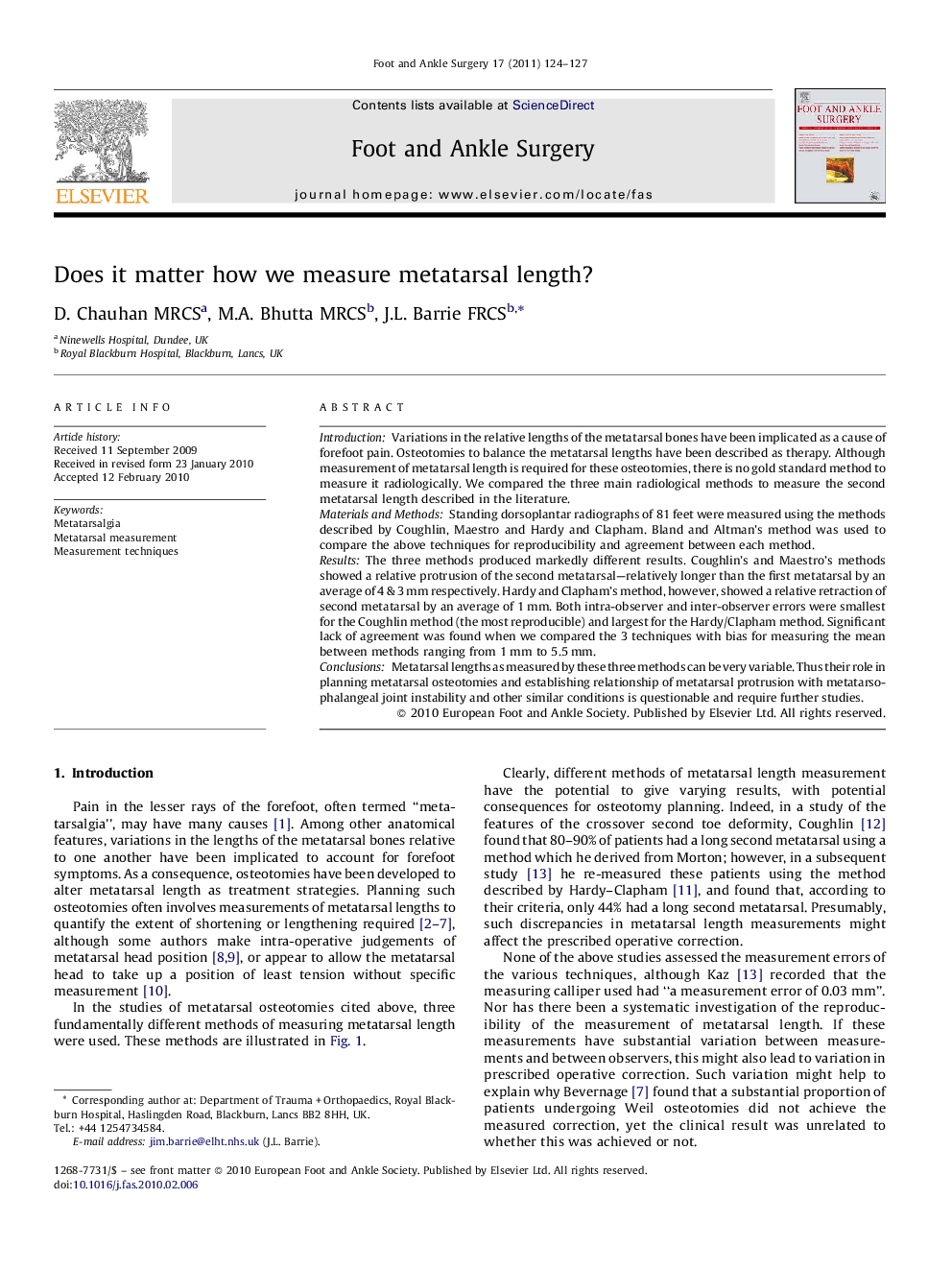| Article ID | Journal | Published Year | Pages | File Type |
|---|---|---|---|---|
| 4055021 | Foot and Ankle Surgery | 2011 | 4 Pages |
IntroductionVariations in the relative lengths of the metatarsal bones have been implicated as a cause of forefoot pain. Osteotomies to balance the metatarsal lengths have been described as therapy. Although measurement of metatarsal length is required for these osteotomies, there is no gold standard method to measure it radiologically. We compared the three main radiological methods to measure the second metatarsal length described in the literature.Materials and MethodsStanding dorsoplantar radiographs of 81 feet were measured using the methods described by Coughlin, Maestro and Hardy and Clapham. Bland and Altman's method was used to compare the above techniques for reproducibility and agreement between each method.ResultsThe three methods produced markedly different results. Coughlin's and Maestro's methods showed a relative protrusion of the second metatarsal—relatively longer than the first metatarsal by an average of 4 & 3 mm respectively. Hardy and Clapham's method, however, showed a relative retraction of second metatarsal by an average of 1 mm. Both intra-observer and inter-observer errors were smallest for the Coughlin method (the most reproducible) and largest for the Hardy/Clapham method. Significant lack of agreement was found when we compared the 3 techniques with bias for measuring the mean between methods ranging from 1 mm to 5.5 mm.ConclusionsMetatarsal lengths as measured by these three methods can be very variable. Thus their role in planning metatarsal osteotomies and establishing relationship of metatarsal protrusion with metatarsophalangeal joint instability and other similar conditions is questionable and require further studies.
